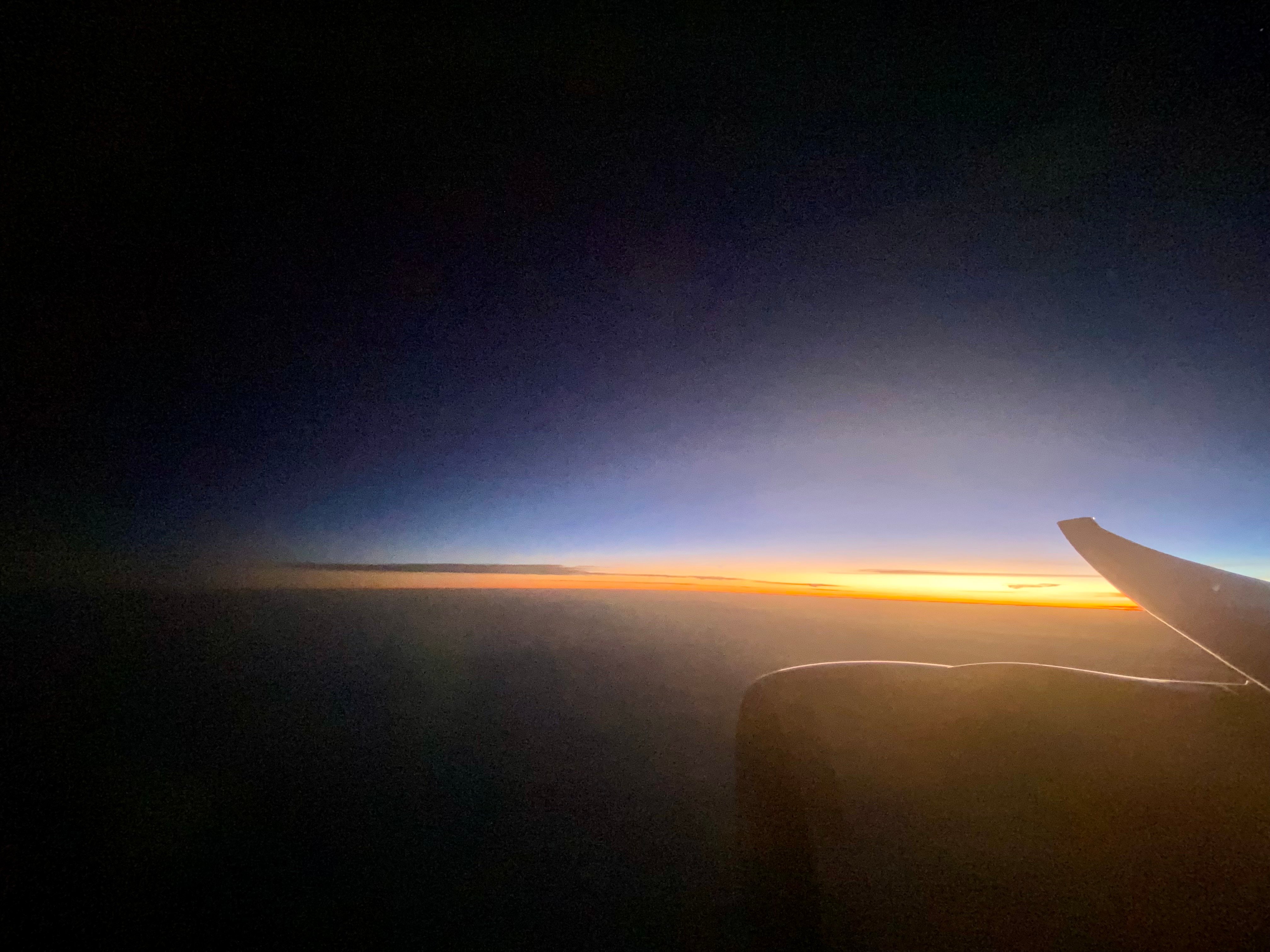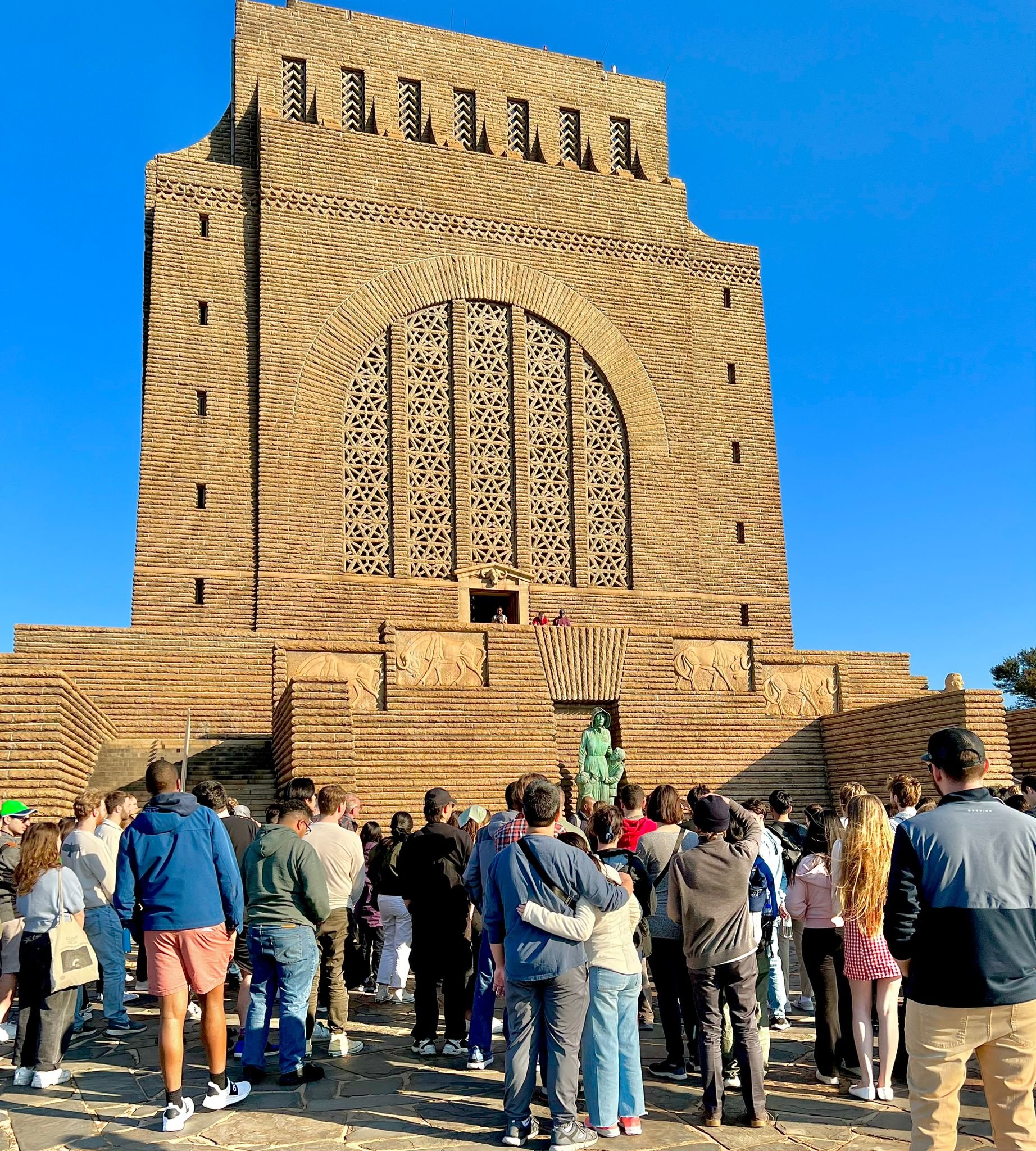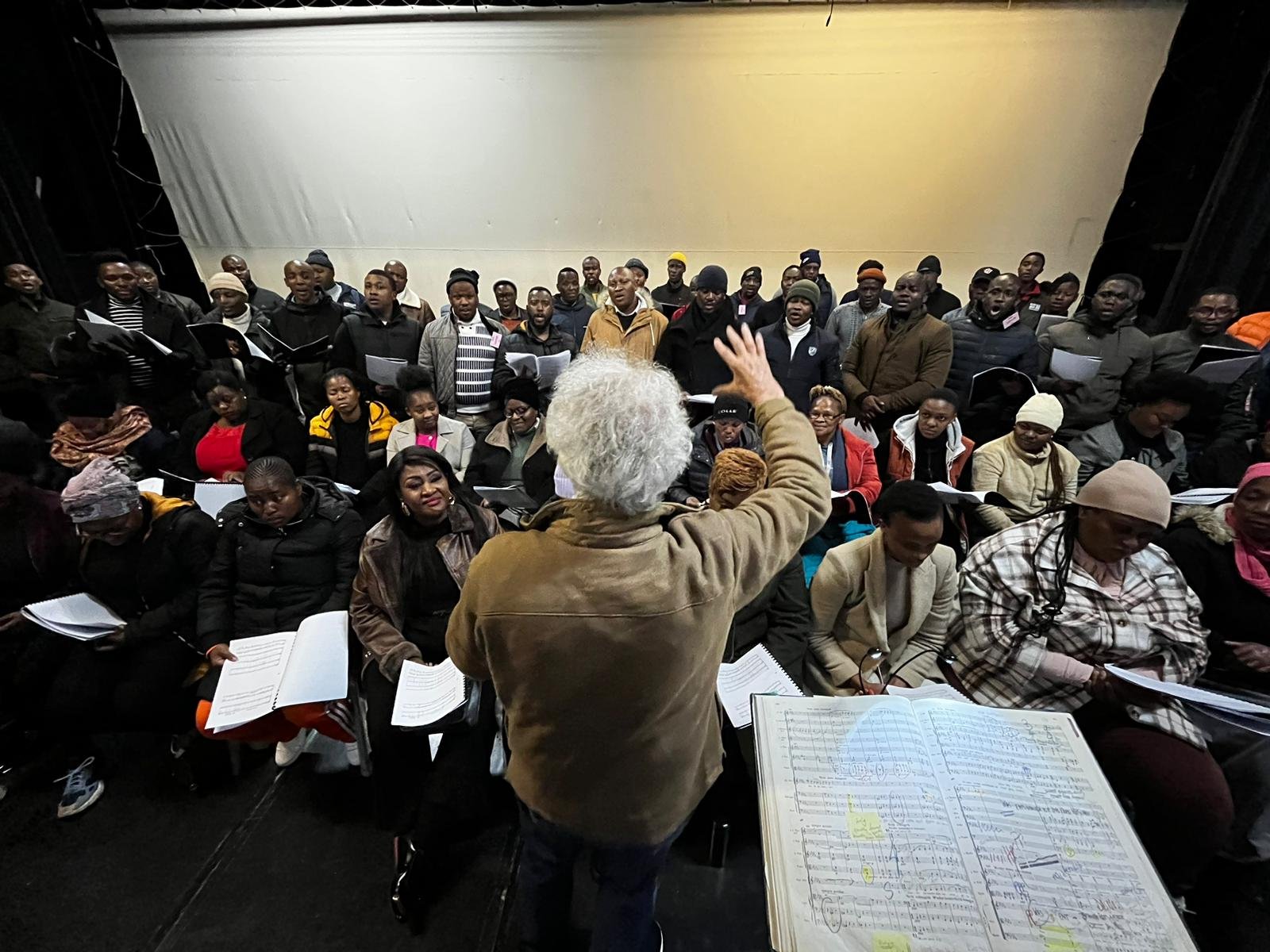“Of the gladdest moments in human life, methinks, is the departure upon a distant journey into unknown lands…Shaking off with one mighty effort the fetters of Habit, the leaden weight of Routine.” So wrote Richard Burton, the great, 19th-century British explorer (not to be confused with the great, 20th-century British actor), before setting out to discover the source of the White Nile.
Granted, an orchestra tour doesn’t exactly fall into the same category as global exploration. And South Africa is anything but an “unknown” destination (even though most of our number haven’t been here previously). Even so, Habit and Routine have, for better or worse, already been tossed to the wind.
For about half of us, that process started bright and early Sunday morning. Given the size of this group, we couldn’t all fit together on one plane, so the first BPYO contingent met at Logan at 4:15 a.m. and proceeded, via London, to Johannesburg. If that early start time weren’t enough, they then had to contend with various delays, subpar food (or so it’s been relayed to me), and a few luggage mishaps.
The rest of us took KLM Sunday night. Both legs of that trip (which went through Amsterdam) ran early and the food was rather tasty – but, yes, some luggage also got lost in the mix; perfection remains elusive in air travel. Our group’s real advantage, at least for those of us lucky enough to score window seats, was that the second flight covered nearly the whole length of Africa in daylight.
For sheer color, topography, and variety of weather the continent didn’t disappoint. How could it? A full three full hours were passed flying over nothing but desert – barren, brown haze as far as the eye could see, pockmarked here and there by cottony tufts – before crossing into some of the lushest, most verdant shades of green imaginable. The last were frequently hidden by some of the boldest, most dramatic cloud formations I’ve ever seen. But the sun managed to break through at opportune moments, including dusk, which was a breathtaking blaze of yellows, reds, and oranges that quickly faded into onyx.

Our first African sunset - from 35,000 feet.
Of course, we’re not embarking on this journey primarily to experience the natural element, incredible as that often is. But it’s worth remembering that one could hardly find three composers more enamored of the wonders of the outdoors than Beethoven, Mahler, and Strauss – two of whom, it should be noted, wrote symphonies about excursions they liked to take into, respectively, the countryside and the Alps. (Mahler was even more ambitious, attempting to embrace the entire cosmos in his oeuvre.)
Either way, getting a literal birds-eye panorama of this narrow slice of Africa was a treat.
Our arrival brought another, in the form of the local ensemble, AfrikaRiz, that serenaded our party from the airport lobby outside of customs to the buses waiting near the parking lot (the British Airways group enjoyed the same welcome in the morning). Even though it had been an extremely long day, the experience was invigorating: these guys sang with contagious passion, energy, precision, tone, and effusive joy – not to mention impressive choreography.
The fact is, they inadvertently offered us a couple of wonderful reminders: that music has a unique power to revitalize the weary soul and that nobody’s got a monopoly on musical excellence. Both are gifts that transcend borders, cultures, styles, and all else that divides. Best of all, they can be freely and easily exchanged.
Ironically, for most of us, that moonlight serenade (if you will) was the only live music-making we’d hear until Wednesday. Given the general level of exhaustion, Tuesday morning’s rehearsal was mercifully called off and the afternoon was passed visiting the Voortrekker Monument, an impressive stone edifice and park raised to commemorate a party of devout Dutch settlers who had survived an attack by Zulu warriors on the site in December 1836.

Members of the BPYO at the Voortrekker Monument in Pretoria.
Afterwards, a small deputation of us accompanied Benjamin Zander to his first rehearsal with the choir that is to sing in the Mahler performances.
What an experience that was. The Gauteng Choristers, they’re called, and, though not a huge group (just about 80 strong) their voices combine into a glorious sound – just like the kids who met us at the airport, in fact: rich, powerful, resonant. It’s not a professional ensemble, but does that really matter? I don’t think so. They sang with an enthusiasm that only grew during the evening.

Benjamin Zander rehearsing the Gauteng Choristers at the National School of the Arts in Johannesburg.
Not that it began quite as securely as some would have hoped. But Ben coached them gracefully and worked through Mahler’s writing for them, adjusting little things here and there. It was really remarkable how the overall picture improved dramatically thanks to, seemingly, the smallest of changes: balancing voices, focusing on enunciating certain words in certain ways (adding an “h,” say, to the beginning of the word “aufersteh’n”), capturing a specific image in a particular passage, and so on.
Ultimately, everything came down to listening. Maybe the best example of this was building the “ja, aufersteh’n” phrase in the choir’s first entrance. Mahler wrote an ungodly low B-flat for the second basses here, which, sometimes, can’t even be sung. The Choristers, though, boast a huge mens’ section, and they had no trouble laying down a firm foundation.
When the rest of the group understood to sing so that they could hear that low note, they constructed their entrances accordingly, and everything fell into place. It was an extraordinary transformation. To judge from the palpable excitement emanating from the ensemble, they took as much joy and pride in their efforts as those of us in the auditorium took satisfaction in their sonority.
Across the evening, too, there were moments in the rehearsal where the choral contributions sounded as good as singing gets in this piece. Of course, how things will align when the chorus is joined by an orchestra of 110 is anybody’s guess. Will they be able to hold their own? Will they be overwhelmed by sheer instrumental numbers and volume? Can the BPYO listen as well to each other and the voices as the choir did among themselves? Only time will tell.
But as we drove back to the hotel in Pretoria, these apparently fundamental issues receded, in my mind at least, in importance. Yes, we’ve all got musical ideals. Those are good, worthwhile, and necessary things. But one needs to be vigilant and not let them become rigid, moribund dogmas.
“Tradition,” Mahler once claimed, “is not the worship of ashes, but the preservation of fire.” If we’re to help preserve the flame here – and, given the fact that the Resurrection Symphony hasn’t been heard in Johannesburg for more than forty years, that flicker needs some tending – these are our tools; flexibility, concentration, and responsiveness the rallying cries. Put them together, and, whether the results meet our predispositions or not, sparks should still fly.
Photo credits: Dave Jamrog, Deb Ramsay, and Jonathan Blumhofer.





